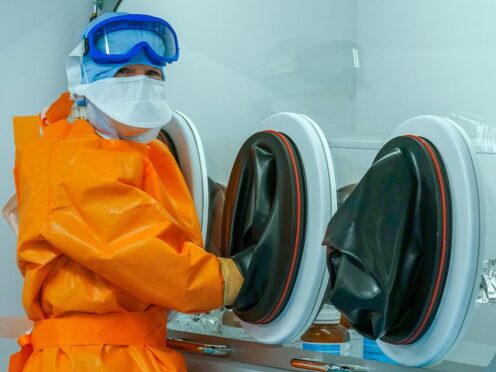Drugs giant AstraZeneca has agreed to buy a Canadian company which has a promising new drug designed to treat prostate cancer, in a deal worth as much as 2.4 billion dollars (£1.9 billion).
The London-listed firm said the deal for Fusion Pharmaceuticals would be a “major step forward” in Astra’s plan to help replace chemotherapy and radiotherapy.
The “next-generation radioconjugates” that Fusion is developing will help doctors target cancer cells more directly than in the past.
That will help minimise the damage to nearby healthy cells and can also enable the treatment of tumours that traditional methods cannot reach.
Fusion’s technology is based on a version of the chemical element actinium.
Called actinium-225, it can be used to produce alpha particles, which help to kill cancer cells by disrupting its DNA.
Unlike most other radiation therapy, alpha particles only travel short distances – up to three cells away – so can kill tumours much more selectively without causing as much damage to healthy cells.
But one of the downsides is that very little actinium-225 is produced in the world today.
According to Andrew Robertson, a scientist at the University of British Columbia, there is only enough of it to treat a few thousand patients every year.
Most actinium-225 comes from decades-old nuclear weapons material, Dr Robertson wrote in a 2019 article.
Fusion Pharmaceuticals came out of the Centre for Probe Development and Commercialisation, which was founded by Dr John Valliant, of Ontario’s McMaster University, in 2008.
Dr Valliant, who is chief executive of Fusion, said: “This acquisition combines Fusion’s expertise and capabilities in radioconjugates, including our industry-leading radiopharmaceutical R&D, pipeline, manufacturing and actinium-225 supply chain, with AstraZeneca’s leadership in small molecules and biologics engineering to develop novel radioconjugates.”
The deal between the companies will be worth 2.0 billion dollars (£1.6 billion) upfront, with a further 400 million dollars (£315 million) possible if certain conditions are met.
Susan Galbraith, AstraZeneca’s executive vice president of oncology R&D, said: “Between 30% and 50% of patients with cancer today receive radiotherapy at some point during treatment, and the acquisition of Fusion furthers our ambition to transform this aspect of care with next-generation radioconjugates.”
